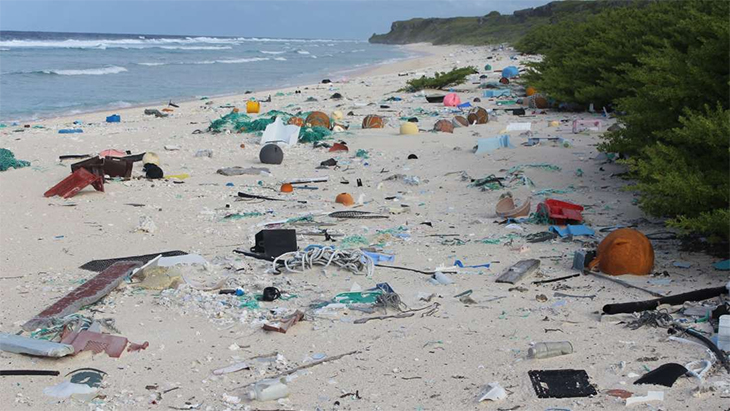By: Stephen Luntz/IFL Science There truly is no Earthly escape from the waste we have unleashed into the environment. Henderson Island in the South Pacific has been found to host hundreds of pieces of plastic per square meter of beach, with even more items buried in the sand.
World heritage site Henderson Island is among the most remote places on Earth. Although Polynesians once occupied the island, it has been uninhabited for at least 600 years. Moreover, the nearest inhabited island is Pitcairn, 193 kilometers (120 miles) away with a population of just 56. When it comes to major population centers Henderson is more than 5,000 kilometers (3,000 miles) from New Zealand, and South America is even further.
Dr. Jennifer Lavers of the University of Tasmania chose to study human debris on Henderson as an indication of the way we are affecting even the most remote places on Earth.
Sampling segments of the 37-square-kilometer (14 square miles) island, the pair found an average of 239 items of human origin per square meter (22 per square foot) just at the beach’s surface. Almost all (99.8 percent) was plastic, and there were more than twice as many bits of plastic, mostly smaller pieces, buried in the first 10 centimeters (4 inches) of sand.
In the Proceedings of the National Academy of Sciences, Lavers reports the quantity by area in one sample, 672 items per square meter (63 per square foot), is the highest recorded anywhere in the world. She estimates the island as a whole has 38 million pieces of plastic on it, weighing 18 tons (19 tons). Lavers told IFLScience most of the plastic was in fragments whose source could not be determined, but of the portions that could, consumer items such as plastic cutlery and shampoo bottles dominated. Another 8 percent came from fishing vessels.
Unsurprisingly, the plastic is affecting local wildlife, for example, cutting sea turtle nesting attempts. The situation is so bad at Henderson because the South Pacific Gyre flows around it, dumping items that enter the ocean from western South America on the island’s beaches. The long time it takes the currents to sweep plastics to Henderson gives plenty of opportunities for large bits to break down into smaller ones. Nevertheless, the people of Chile and Peru are not huge plastics users compared to more populous nations in the Northern Hemisphere, making the North Pacific Garbage Patch much worse than its southern equivalent.
Hopefully, the news will make some people think about the importance of wise plastic disposal. Meanwhile, the work adds urgency to efforts to clean up plastics, such as rapidly advancing crowd-funded projects to capture the products at sea for recycling, or to find ways to break materials down to bio-usable molecules.

The plastic isn’t a total disaster. Many crabs are making their homes in plastic debris. This one found itself a nice Avon cosmetics jar. J. Lavers 2015




